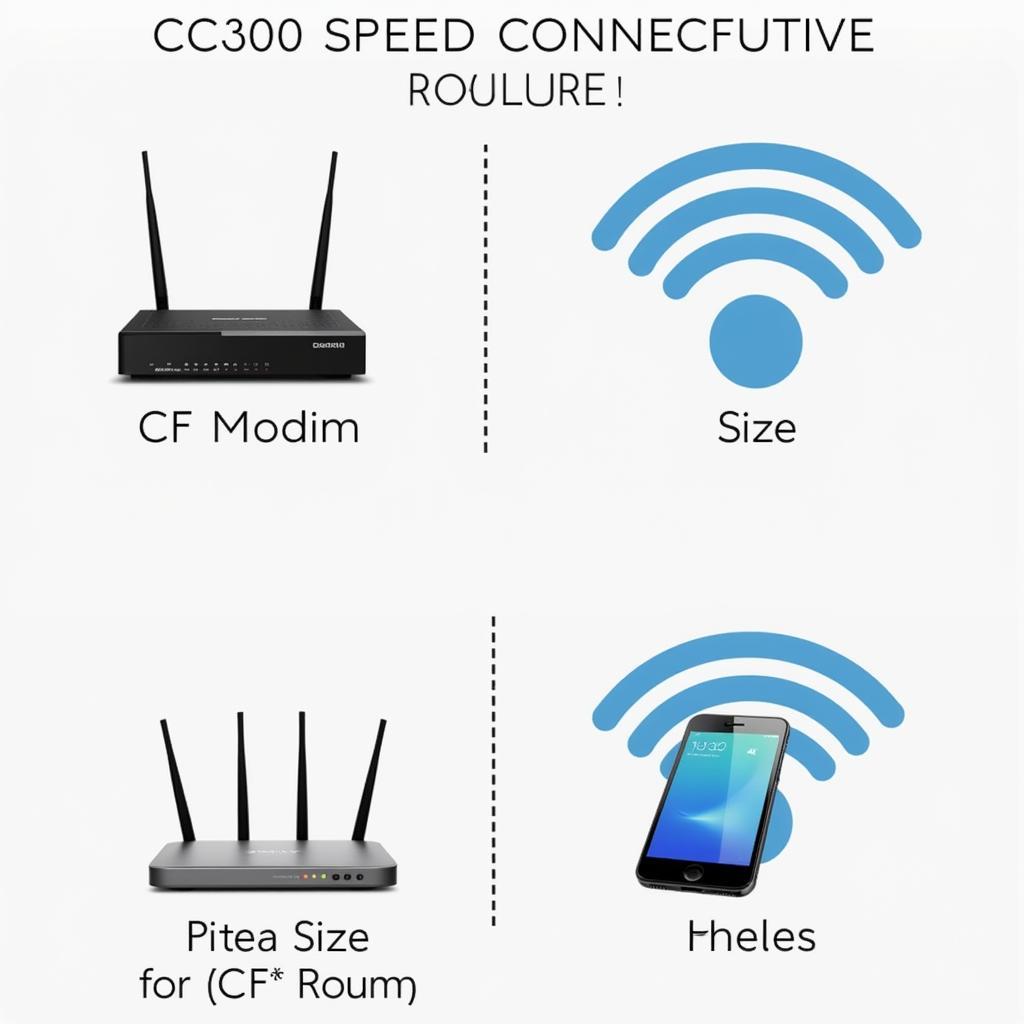Understanding CF Modem Technology
November 4, 2024Cf Modem, or CompactFlash modem, was a popular way to connect to the internet in the early 2000s. These small, portable devices slotted into the CompactFlash card slots commonly found in laptops and PDAs, providing a convenient way to access dial-up or cellular networks. While largely superseded by newer technologies like Wi-Fi and mobile broadband, understanding the history and functionality of CF modems offers a valuable perspective on the evolution of internet connectivity.
What is a CF Modem?
CF modems were essentially miniaturized modems designed to fit the CompactFlash Type I form factor. They offered a plug-and-play solution for internet access, particularly for users on the go. Different models catered to various connection types, including dial-up through standard phone lines and cellular connections through GSM or CDMA networks. This flexibility made them a versatile tool for staying connected in a pre-Wi-Fi world.
Types of CF Modems
Several types of CF modems catered to different needs:
-
Dial-up CF Modems: These modems connected to standard phone lines and offered the classic dial-up experience. Speeds were limited by the phone line’s bandwidth, typically reaching a maximum of 56kbps.
-
Cellular CF Modems (GSM/CDMA): These modems utilized cellular networks for connection, offering faster speeds than dial-up in areas with good cellular coverage. They were crucial for early mobile internet access.
-
Combination CF Modems: Some models offered both dial-up and cellular connectivity options, providing maximum flexibility for users who needed to connect in various situations.
Advantages of Using a CF Modem
Despite their obsolescence, CF modems offered several advantages in their time:
-
Portability: Their small size and easy installation made them incredibly portable.
-
Convenience: The plug-and-play nature simplified the connection process.
-
Flexibility: Various models catered to different connection types.
Disadvantages of Using a CF Modem
However, CF modems also had limitations:
-
Speed: Dial-up speeds were notoriously slow, and even cellular connections were limited compared to modern standards.
-
Cost: CF modems could be relatively expensive, especially cellular models.
-
Coverage: Cellular connectivity was dependent on network coverage, which could be patchy in certain areas.
CF Modems in the Modern Era
In today’s world of high-speed internet access through Wi-Fi, mobile broadband, and fiber optic connections, CF modems have become largely obsolete. However, they represent an important step in the evolution of mobile connectivity, paving the way for the technologies we rely on today. Understanding their role in the history of the internet offers a valuable perspective on how far we’ve come.
Why are CF Modems no longer used?
Simply put, technology has advanced. Wi-Fi and mobile broadband offer significantly faster speeds, greater convenience, and wider availability, making CF modems redundant for most users.
“CF modems were a crucial tool for early mobile professionals,” says Dr. Alex Thompson, a technology historian. “They provided a vital link to the internet in a time before widespread wireless connectivity. Their impact on the development of mobile computing shouldn’t be underestimated.”
 Comparison of CF Modem with Modern Connectivity Technologies
Comparison of CF Modem with Modern Connectivity Technologies
Conclusion
The CF modem, while no longer a practical solution for everyday internet access, played a significant role in the history of mobile computing. Understanding its functionality and limitations offers a valuable lesson on how technology evolves and adapts to meet changing needs. While CF modems are now largely relegated to the realm of retro technology, their contribution to the development of mobile internet access should be remembered. The convenience and portability they offered laid the groundwork for the ubiquitous connectivity we enjoy today.
FAQ
- What does CF stand for in CF modem? CF stands for CompactFlash.
- What type of connection did CF modems use? CF modems used either dial-up or cellular connections.
- Are CF modems still used today? No, CF modems are largely obsolete.
- What replaced CF modems? Wi-Fi and mobile broadband replaced CF modems.
- What were the speed limitations of CF modems? Dial-up CF modems were limited to 56kbps, while cellular speeds were also limited compared to modern standards.
- Where did you insert a CF modem? CF modems were inserted into a CompactFlash slot on a laptop or PDA.
- What are the different types of CF modems? The main types were dial-up, cellular (GSM/CDMA), and combination modems.
Common Scenarios and Questions:
- Scenario: Traveling for work in the early 2000s and needing to connect to the internet from a hotel room. A CF modem provided a portable solution for accessing email and essential online resources.
- Question: Could I use a CF modem with my modern laptop? Most modern laptops do not have CompactFlash slots, rendering CF modems incompatible.
Suggested Further Reading:
- The History of Mobile Computing
- The Evolution of Internet Connectivity
- Understanding Modem Technology
For any further assistance or inquiries, please contact us at Phone Number: 0915117113, Email: [email protected] Or visit our address: To 3 Kp Binh An, Phu Thuong, Vietnam, Binh Phuoc 830000, Vietnam. We have a 24/7 customer support team.